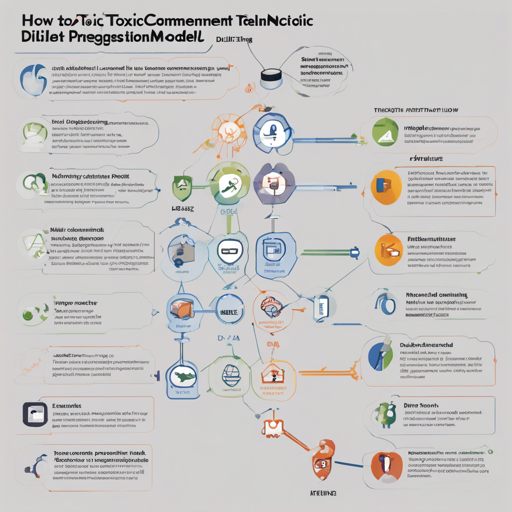In today’s digital landscape, ensuring a safe online environment is crucial. Toxic comments can lead to harassment and negativity, affecting users’ experiences. In this article, we will guide you through the steps to create a model that can identify toxic comments using the DistilBERT architecture. Designed for ease of use, this process will help you understand how to tackle this issue effectively.
Understanding the Model
The foundation of our model relies on a multilingual DistilBERT variant, fine-tuned specifically for detecting toxicity in comments. This model is trained on a translated version of the Jigsaw Toxicity dataset. By fine-tuning DistilBERT, we can leverage its language understanding capabilities to spot toxic comments amidst non-toxic interactions.
Steps to Create the Model
Creating your own toxic comment detection model involves several key steps. Let’s dive in:
- Dataset Preparation: While we can’t share the dataset due to licensing constraints, you can access the Jigsaw dataset to begin your work.
- Model Selection: We are using distilbert-base-multilingual-cased. This model is lightweight and effective for our needs.
- Training the Model: Key parameters for training include:
training_args = TrainingArguments(
learning_rate=3e-5,
per_device_train_batch_size=16,
per_device_eval_batch_size=16,
gradient_accumulation_steps=4,
load_best_model_at_end=True,
metric_for_best_model=recall,
epochs=2,
evaluation_strategy=steps,
save_strategy=steps,
save_total_limit=10,
logging_steps=100,
eval_steps=250,
save_steps=250,
weight_decay=0.001,
report_to=wandb
)In our analogy, think of this training process as teaching a child to distinguish good comments from bad ones. The child learns by observing examples repeatedly; in this case, our model learns from thousands of comments, understanding context, sentiments, and nuances.
Model Performance
After training, the model’s performance can be assessed using various metrics:
- Accuracy: 95.75%
- F1 Score: 78.88%
- Recall: 77.23%
- Precision: 80.61%
These metrics help us understand how well our model can identify both toxic and non-toxic comments effectively.
Troubleshooting Tips
As you develop your toxic comment detection model, you may run into some challenges. Here are a few troubleshooting tips:
- If the model isn’t performing well, consider augmenting your dataset for better training diversity.
- Adjust hyperparameters such as learning rate and batch size, as these can significantly affect performance.
- Utilize validation datasets to fine-tune and gauge the model’s accuracy before final evaluation.
- Monitor for overfitting by keeping track of training versus validation performance.
For more insights, updates, or to collaborate on AI development projects, stay connected with fxis.ai.
Conclusion
Building a toxic comment detection model is not just a task; it is a step towards creating a healthier online community. With the power of advanced machine learning techniques, we can filter out negativity and support positive interactions.
At fxis.ai, we believe that such advancements are crucial for the future of AI, as they enable more comprehensive and effective solutions. Our team is continually exploring new methodologies to push the envelope in artificial intelligence, ensuring that our clients benefit from the latest technological innovations.

